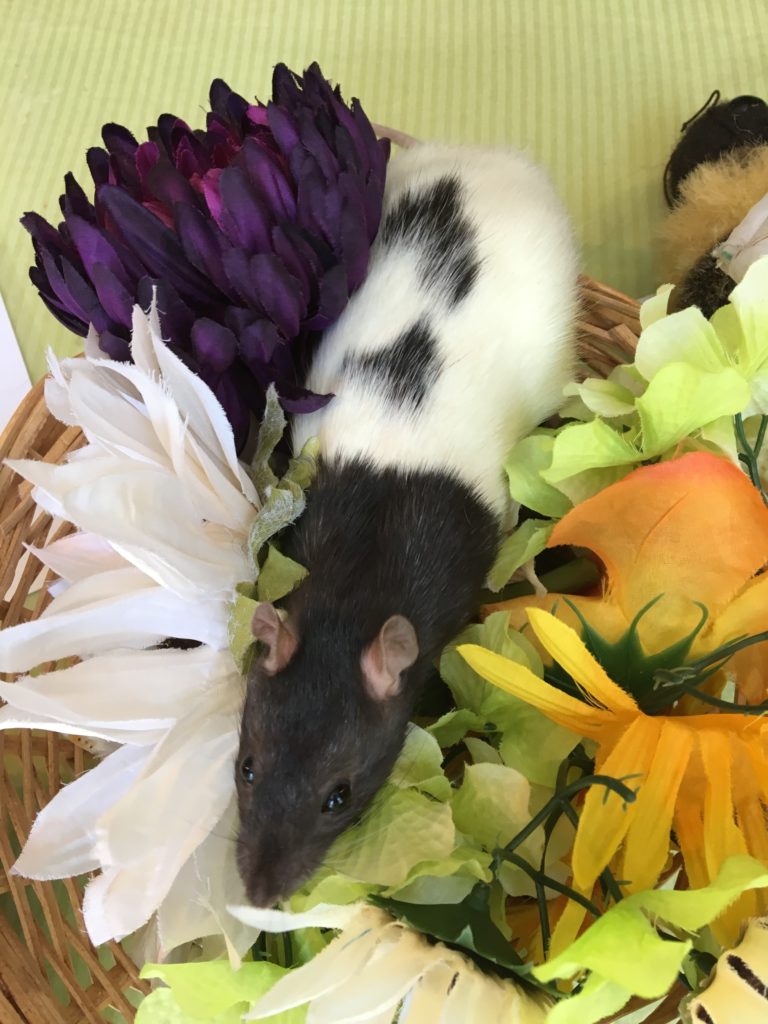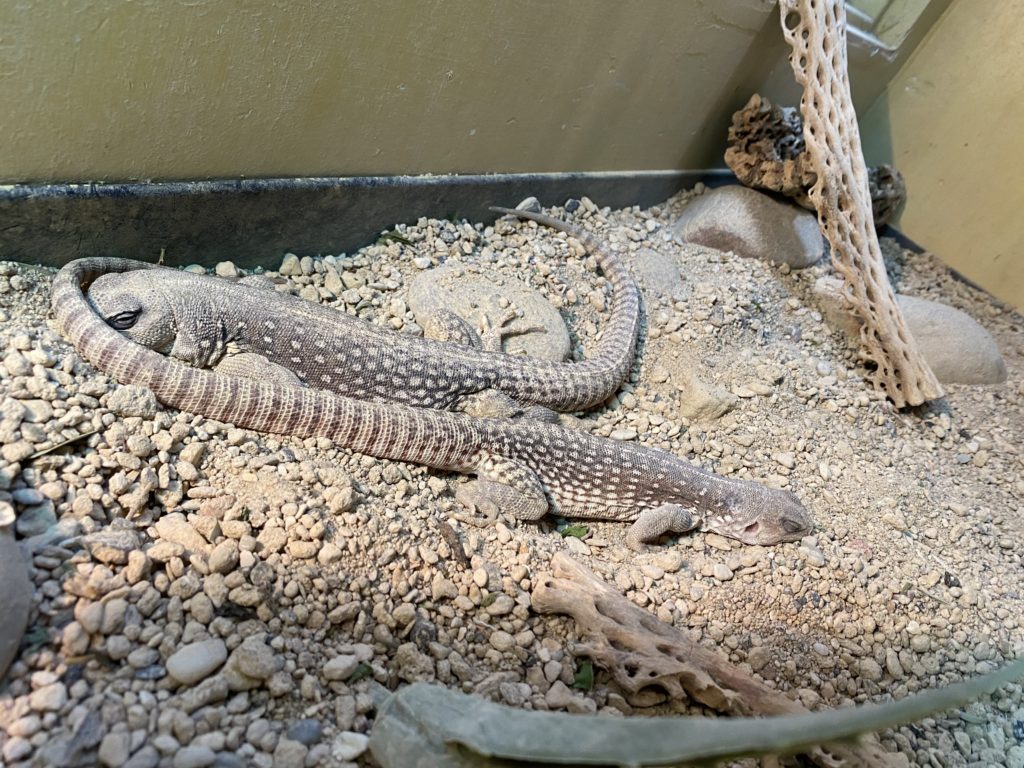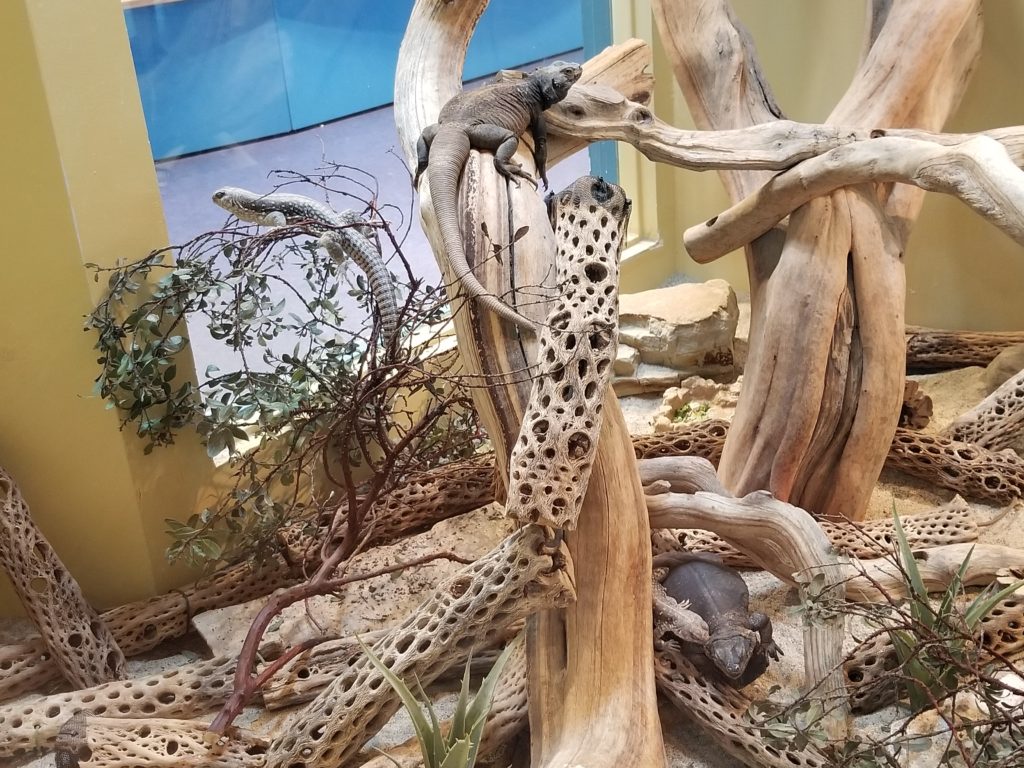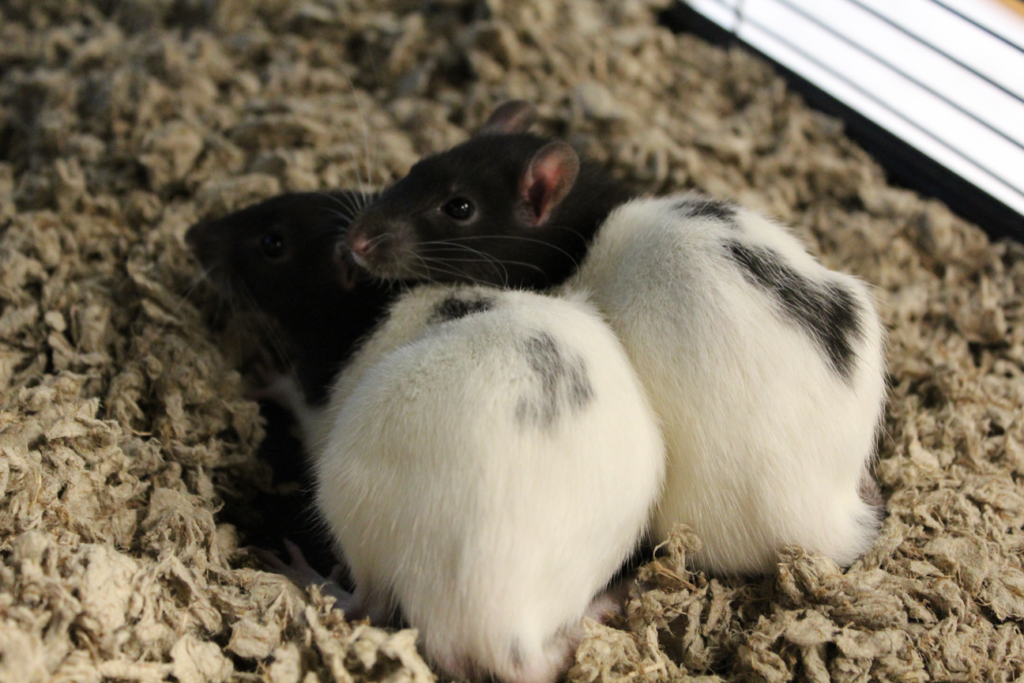It is with heavy hearts that Animal Encounters announces the passing of two beloved animal ambassadors, Blossom the California Ground Squirrel and Buzz Aldrin the Domestic Rat.
 Blossom came to Lindsay in 2014 after being kept as a pet for several years. She was said to have been born in 2010, which would have made her over 10 years old at the time of her passing. Blossom was named shortly after her arrival in a public naming contest. She was named after Frederick William Beechey, who explored much of Northern California in 1826 – 1828 as captain of His Majesty’s Ship “Blossom”.
Blossom came to Lindsay in 2014 after being kept as a pet for several years. She was said to have been born in 2010, which would have made her over 10 years old at the time of her passing. Blossom was named shortly after her arrival in a public naming contest. She was named after Frederick William Beechey, who explored much of Northern California in 1826 – 1828 as captain of His Majesty’s Ship “Blossom”.
During Blossom’s six years at Lindsay, she was able to participate in many programs and was considered a favorite ambassador among the visitors, staff, and volunteers. In her earlier years at Lindsay, Blossom participated in a training session inside the Animal Activity Area where she would practice her target training, agility skills, and health check routines. It was always fun to watch her feeding demonstration programs as she foraged in her enclosure for hidden treats, ripping open enrichment bags, tubes, and boxes, and chewing through hard nut shells with her teeth. Throughout the day, Blossom would delight visitors as she would gather her nest and “move” to a new location in her enclosure.
 While Blossom’s main enclosure was located inside the exhibit hall, she was able to spend time outdoors with her keepers in an exercise aviary or in her travel enclosure on the Animal Encounters dock. While in her dock enclosure, Blossom would forage for food, gather nesting materials, and was often seen “relaxing” in her hammock in the sunshine. During Lindsay’s closure, Blossom was able to spend most of her days outside.
While Blossom’s main enclosure was located inside the exhibit hall, she was able to spend time outdoors with her keepers in an exercise aviary or in her travel enclosure on the Animal Encounters dock. While in her dock enclosure, Blossom would forage for food, gather nesting materials, and was often seen “relaxing” in her hammock in the sunshine. During Lindsay’s closure, Blossom was able to spend most of her days outside.
While Blossom never let her aging years get the best of her, in August 2020, it was noted she had some discomfort in her right eye. Working with her keepers and veterinarian staff, Blossom participated in training sessions that allowed her to receive eye drops to help keep her comfortable. She also accepted any oral medications smashed in banana, which was her favorite fruit. In December 2020, a CT scan showed a retrobulbar mass behind her right eye. On January 2, 2021, Blossom was humanely euthanized to prevent any further discomfort from the mass. Her last day was spent in the keeper office, receiving lots of love and attention from her caregivers, as well as some very special treats. Blossom will always be remembered as the spirited “squirrel-girl” and for the way she would always sit roundly on her back legs while enjoying her favorite treats.
 Buzz Aldrin was one of two domestic rats at Lindsay. Buzz and his brother Neil (Armstrong) came to us in early 2018. Keepers and volunteers quickly fell in love with these two rats — the first male ambassador rats to call Lindsay Wildlife Experience home.
Buzz Aldrin was one of two domestic rats at Lindsay. Buzz and his brother Neil (Armstrong) came to us in early 2018. Keepers and volunteers quickly fell in love with these two rats — the first male ambassador rats to call Lindsay Wildlife Experience home.
Buzz was incredibly friendly, an absolute perfect ambassador for his species. In his prime, he was showing off the ability of domestic rats to jump long distances as he leapt between the benches in our exhibit hall, much to the joy of onlookers! He also showed just how dextrous these animals can be by climbing ropes and squeezing into a wooden space shuttle in honor of his namesake! Buzz loved banana chips and mealworms and got to enjoy some very special treats in his last few weeks, including Cheerios and cinnamon strudel.
 For Christmas, Buzz and Neil unwrapped a special wooden house filled with Cheerios. His joy for living in the moment is a good reminder to treat every day like it’s special. We are going to miss this unique and gentle rat so much. His brother Neil is still doing well and receiving lots of love from his friends.
For Christmas, Buzz and Neil unwrapped a special wooden house filled with Cheerios. His joy for living in the moment is a good reminder to treat every day like it’s special. We are going to miss this unique and gentle rat so much. His brother Neil is still doing well and receiving lots of love from his friends.
Good night Buzz Aldrin and good luck on your further exploration of the stars.









 Baby beetles ( or as entomologists call them, “larvae”) are scavengers like the adults. Their heavily armored body is designed for digging, eating, and storing fat in preparation for its metamorphosis into an adult beetle. Fascinatingly, these easily overlooked animals
Baby beetles ( or as entomologists call them, “larvae”) are scavengers like the adults. Their heavily armored body is designed for digging, eating, and storing fat in preparation for its metamorphosis into an adult beetle. Fascinatingly, these easily overlooked animals 






















